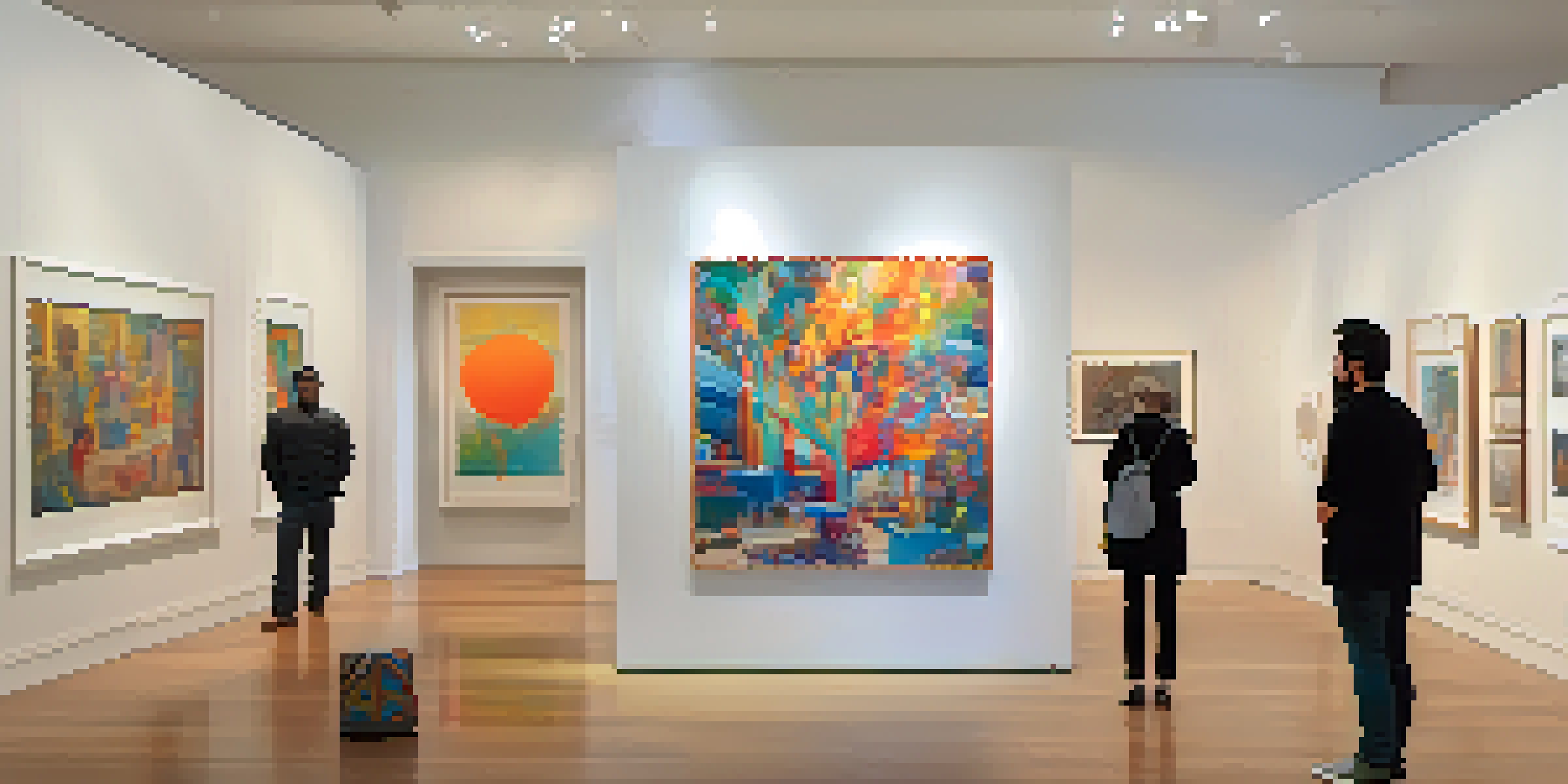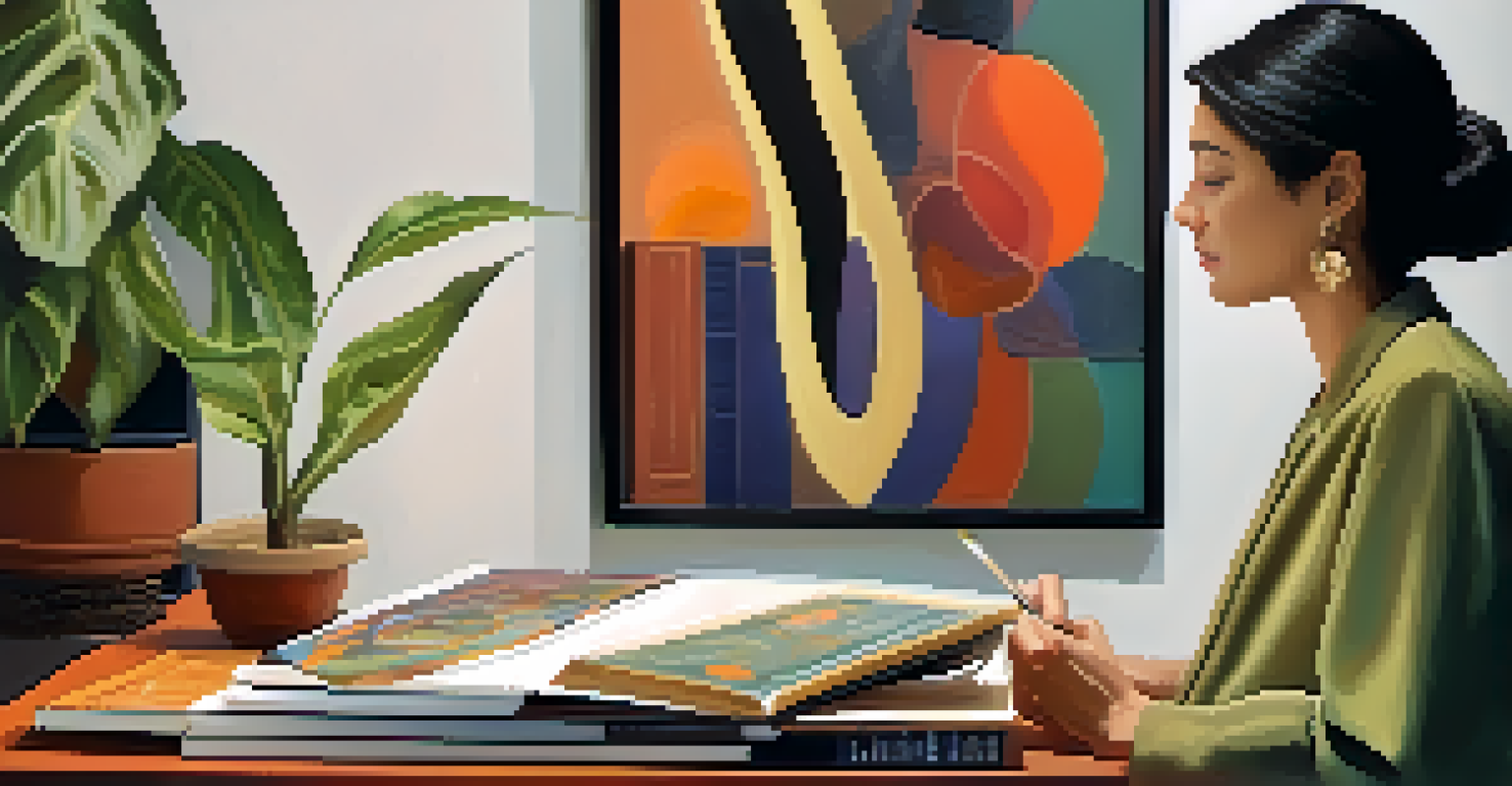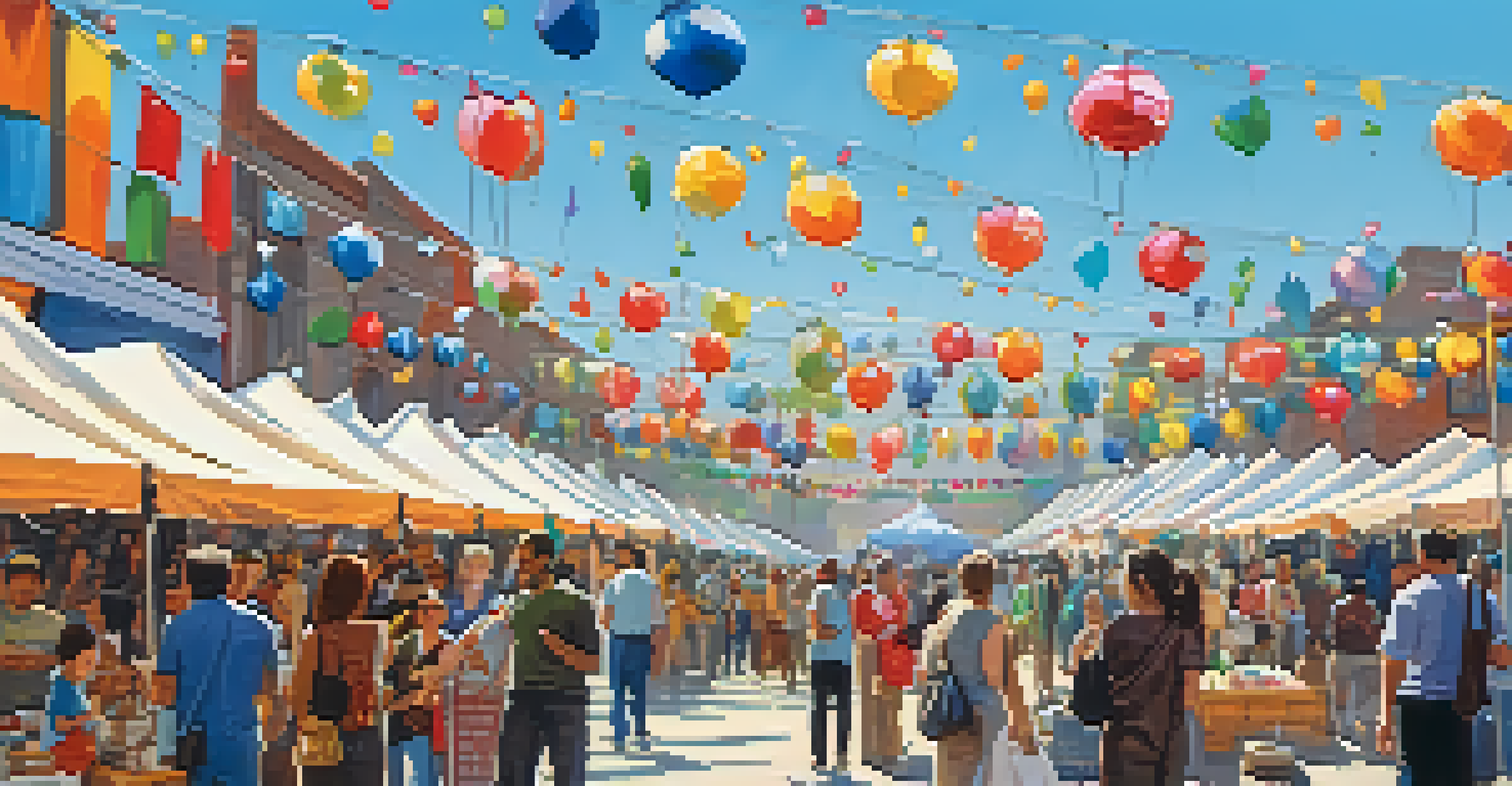Art Collectors and Their Impact on Investment Trends

The Rise of Art Collecting as an Investment Strategy
Art collecting has evolved from a pastime for the wealthy to a serious investment strategy. Many investors are now recognizing the potential for art to appreciate in value over time, often outperforming traditional assets like stocks and bonds. This shift reflects a growing awareness that art is not just for admiration, but can also be a lucrative financial asset.
Art is not a thing, it is a way.
As more individuals enter the art market, the landscape is changing. New collectors, often from diverse backgrounds, are bringing fresh perspectives and tastes, which can influence what types of art become sought after. This democratization of art collecting is reshaping investment trends and creating new opportunities for both established and emerging artists.
Additionally, the digital age has made art more accessible than ever. Online platforms allow collectors to explore and purchase art globally, further fueling interest and investment in the art market. As collectors leverage technology, the art world is poised for continued growth and evolution, making it an exciting time for both collectors and investors.
The Role of Art Collectors in Shaping Market Trends
Art collectors play a pivotal role in determining what is considered valuable in the market. Their tastes, preferences, and purchases can significantly influence which artists gain prominence and which styles become trendy. For instance, when a well-known collector champions a specific artist, it can lead to increased demand and higher prices for that artist's work.

Moreover, collectors often act as tastemakers, guiding not only the types of art that are in vogue but also the narratives surrounding them. This influence can shape public perception and drive investment in particular movements or genres, such as contemporary art or street art. As such, collectors have the power to elevate certain artists and trends to new heights.
Art as a Valuable Investment
Art collecting has shifted from a luxury hobby to a serious investment strategy, often outperforming traditional assets.
In many cases, collectors also collaborate with galleries and auction houses, further enhancing their impact on the market. By curating exhibitions, hosting events, and sharing their collections, they contribute to the overall visibility and desirability of specific artworks. This interconnectedness between collectors and the art industry highlights the significant influence they wield.
The Impact of Economic Conditions on Art Investments
Economic conditions play a critical role in influencing art investment trends. During times of economic prosperity, collectors are more likely to invest in high-value artworks, while recessions can lead to a downturn in the market. Understanding these cycles helps both collectors and investors strategize their purchases and sales effectively.
Investing in art is not just about building a collection; it’s about building a legacy.
For instance, during the COVID-19 pandemic, many collectors turned to art as a stable investment option when traditional markets were volatile. This shift highlighted how collectors adapt to economic pressures, often seeking art as a hedge against inflation or market uncertainty. As a result, some segments of the art market saw significant growth even in challenging times.
Additionally, collectors are increasingly considering the long-term value of their investments. Rather than seeking quick profits, many are focusing on building collections that can withstand economic fluctuations. This approach not only stabilizes the market but also encourages a deeper appreciation for the art itself, fostering a more sustainable investment culture.
Technological Advancements and Their Influence
In recent years, technology has transformed the art market in many ways, creating new opportunities for collectors and investors alike. From online auctions to virtual galleries, the digital landscape allows for broader access and participation in the art market. This technological shift not only increases visibility for artists but also democratizes the buying process.
Blockchain technology is another significant advancement impacting art investments. By providing a secure way to authenticate and track art ownership, blockchain is helping to reduce fraud and increase trust in the market. As collectors become more confident in the provenance of artworks, they are more likely to invest in higher-value pieces.
Collectors Shape Market Trends
Art collectors influence the value of artworks through their preferences and purchases, acting as tastemakers in the industry.
Moreover, social media platforms have become invaluable tools for collectors. They can showcase their collections, connect with other enthusiasts, and discover emerging artists. This interconnectedness not only fosters community but also influences buying trends, as collectors share insights and recommendations with one another.
The Cultural Significance of Art Collecting
Art collecting is not just about financial gain; it also reflects cultural values and personal identities. Collectors often seek pieces that resonate with their beliefs, experiences, or heritage, making their collections deeply personal. This cultural significance adds another layer of value to their investments, as art becomes a means of storytelling and expression.
Furthermore, art collectors often play a crucial role in preserving cultural heritage. By acquiring works from diverse backgrounds and cultures, they help to ensure that these narratives are not lost over time. This commitment to cultural preservation can influence investment trends, as collectors increasingly seek out works that reflect diversity and inclusivity.
In essence, the motivations behind art collecting go beyond mere investment. They encompass a desire to connect with history, culture, and community. As collectors become more aware of their impact, they are reshaping the art market to reflect a more inclusive and culturally rich narrative.
Challenges Faced by Art Collectors Today
While art collecting can be rewarding, it also comes with its own set of challenges. One significant issue is the lack of transparency in the art market, which can make it difficult for collectors to assess the true value of a piece. This opacity can lead to overpaying for works or missing out on valuable investments, emphasizing the need for due diligence.
Additionally, as the market grows, so does the competition among collectors. With more people entering the art world, it can be challenging to secure sought-after pieces. Collectors often find themselves in bidding wars at auctions, driving prices up and making it harder to build a collection without substantial financial backing.
Technology Enhances Accessibility
Advancements in technology, including online platforms and blockchain, have made art more accessible and trustworthy for collectors.
Lastly, the evolving nature of art itself presents challenges. As new movements emerge and tastes shift, collectors must stay informed and adaptable. This constant change can make it difficult to predict which investments will appreciate, underscoring the importance of ongoing research and education in art collecting.
The Future of Art Collecting and Investment Trends
Looking ahead, the future of art collecting appears bright, with numerous trends shaping the landscape. The increasing integration of technology will continue to enhance accessibility and transparency in the market. As more collectors embrace digital platforms, we can expect to see a greater variety of artworks becoming available to a wider audience.
Additionally, the emphasis on sustainability and social responsibility is likely to grow. Collectors are becoming more conscious of the environmental and social impact of their purchases, which could influence their investment decisions. This shift towards responsible collecting may lead to a greater focus on artists who prioritize ethical practices in their work.

Ultimately, the art market will continue to evolve, driven by the passions and values of collectors. As they shape investment trends, the interplay between art, culture, and finance will create a dynamic environment filled with opportunities for both seasoned investors and newcomers alike.